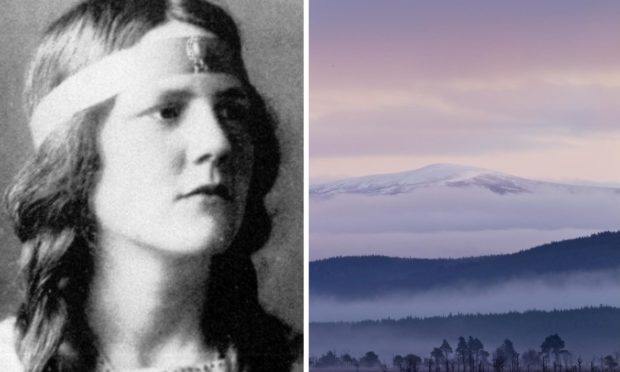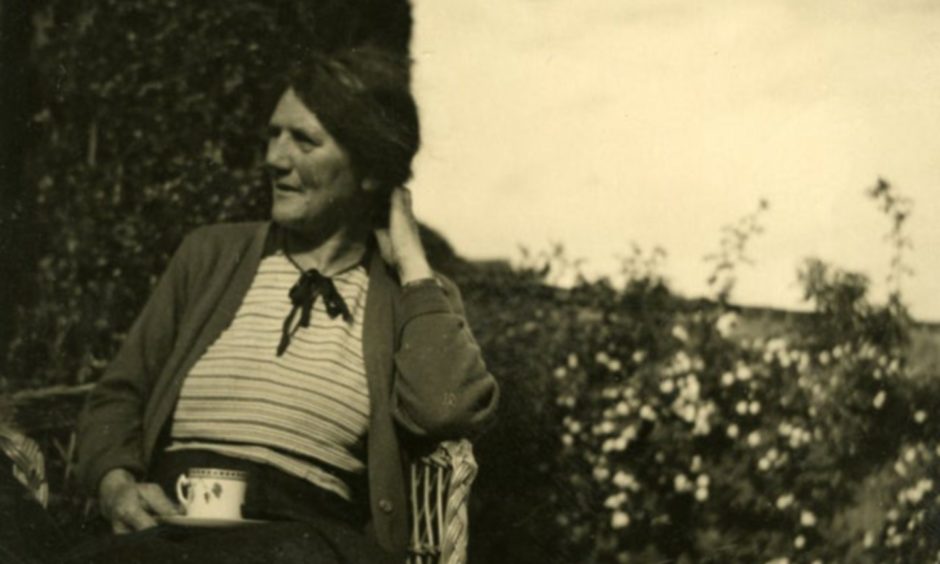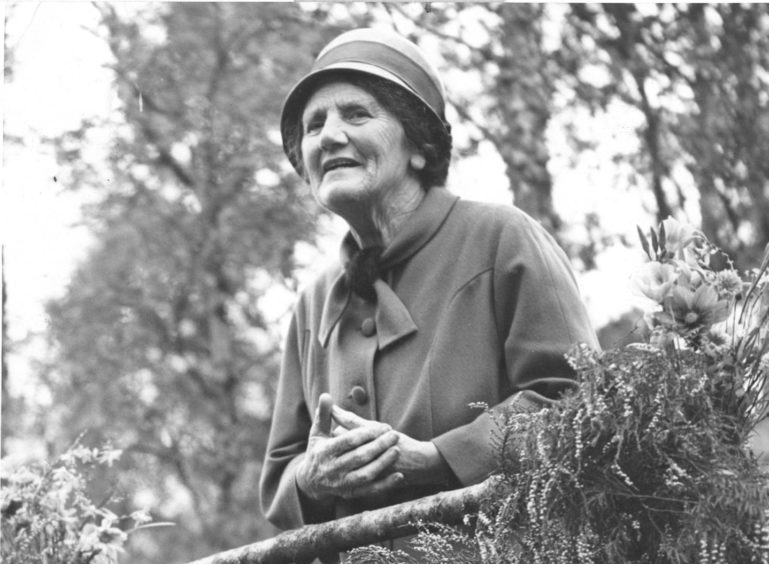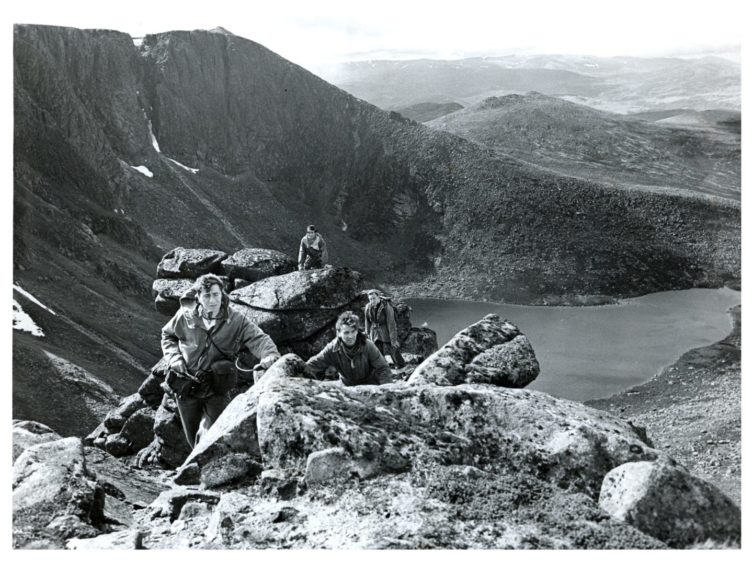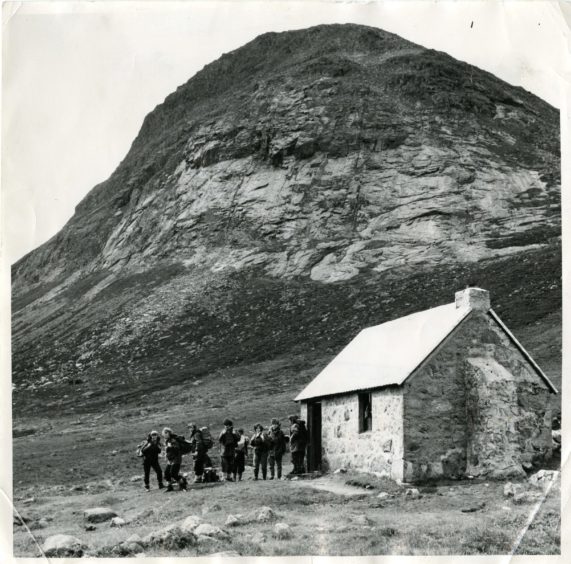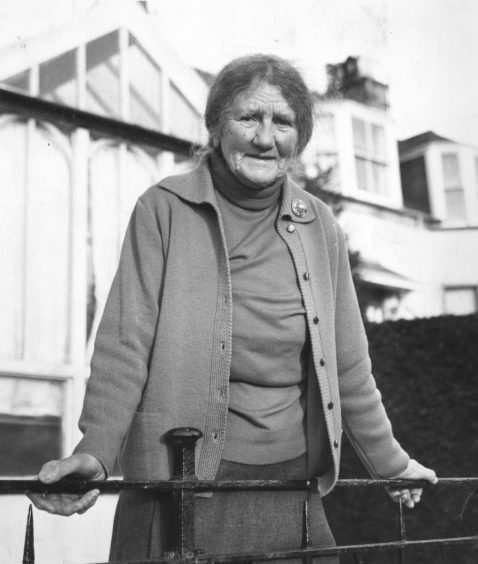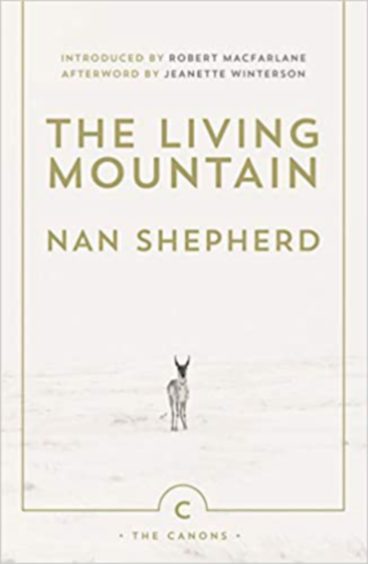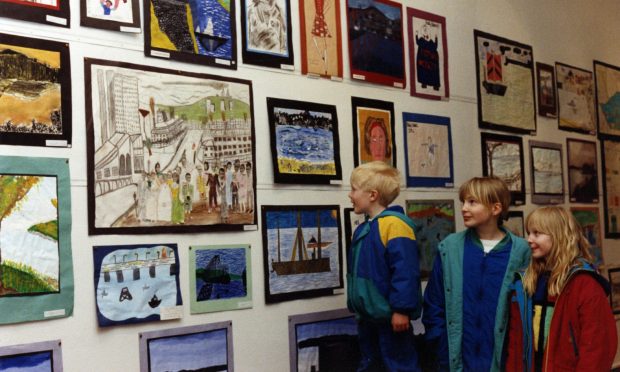Nan Shepherd was a pioneering adventurer, writer and explorer who penned a seminal book about the Cairngorms. As February 27 marks 40 years since the north-east icon died, Gayle Ritchie looks at her life and legacy.
Nan Shepherd’s book, The Living Mountain, is a literary masterpiece.
But despite featuring on the Royal Bank of Scotland’s £5 note against the backdrop of her beloved Cairngorms, many people are unaware of Nan’s legacy.
Born in 1893 in East Peterculter in Deeside, Nan went on to become a pioneering adventurer, writer and explorer.
She published her first novel, The Quarry Wood, in 1928 and two more followed in the 1930s.
All three books are set in insular country communities, looking at women torn between family and the exciting new opportunities offered by the modern age, with the harsh north-east landscape as background.
As she moved into her late 30s, Nan began to roam the foothills of the eastern Cairngorms, about 50 miles from her home.
She was fascinated by what happened to mind and matter at height.
She wrote to a friend in 1940: “To apprehend things – walking on a hill, seeing the light change, the mist, the dark, being aware, using the whole of one’s body to instruct the spirit… it dissolves one’s being. I am no longer myself but part of a life beyond myself.”
By the summer of 1945 she had completed a book on what she called the “total mountain”.
She sent the manuscript to her friend and fellow novelist Neil Gunn.
Although he enjoyed it, he was dubious about it being published and so it sat gathering dust in a drawer for 32 years.
It was finally published as The Living Mountain in 1977, four years before Shepherd’s death – on February 27 1981 – and has been growing in influence since.
Each chapter of the book mixes field notes, lyrical memoir, oral history, natural history and an almost zen-like meditation of the nature of landscape and consciousness.
A meditation
Today, The Living Mountain is acclaimed as “one of the finest books ever written on nature and landscape in Britain”.
Many claim their vision of the Cairngorms is radically altered when they read the poetic and philosophical journey “into” the mountains, regarding it as a “meditation” and not a “manifesto”.
Rather than walking “up” a mountain, Nan suggests we walk “into” them, which encourages us to explore ourselves as well as the landscape.
An extract from her book states: “Beginners want the startling view, the horrid pinnacle, sips of beer and tea, instead of milk.”
For Nan, it wasn’t about conquering the summit, bagging a Munro or anything along those lines.
Rather, she went “stravaigin” around the mountain, exploring it in great detail, describing herself as “a peerer into nooks and crannies”.
She wrote: “Often the mountain gives itself most completely when I have no destination but have gone out merely to be with the mountain as one visits a friend, with no intention but to be with him.”
Although Nan spent years walking into the Cairngorms, she understood she would never know them completely.
The capacity of the mountain to keep its secrets and spring surprises always intrigued her.
Often the mountain gives itself most completely when I have no destination but have gone out merely to be with the mountain as one visits a friend, with no intention but to be with him.”
Nan Shepherd
One of those secrets was a tiny body of water tucked under a ring of cliffs, 3,000ft above sea level and miles from the nearest road – Loch Coire an Lochain.
She wrote: “It cannot be seen until one stands almost on its lip, the inaccessibility of this loch is part of its power. Silence belongs to it.”
Inspiring modern day nature writers
In 2019, Merryn Glover became the first ever writer-in-residence for the Cairngorms National Park, leading to an increasing focus on nature in her work.
She is currently writing The Hidden Fires: A Cairngorms Journey with Nan Shepherd.
Merryn first became aware of Nan’s work after stumbling on a copy of The Living Mountain in a book shop about a decade ago.
“She was an exceptional writer and thinker for her time, but also a deep and attentive lover of the natural world, and she brought these two threads together in all of her writing, but particularly in The Living Mountain,” muses Merryn, who lives in Kincraig.
“She was quietly non-conformist and drew from wide reading and philosophical probing to develop her own unique perspective on what it means to be a fully conscious and embodied human being in a dynamic, physical world.”
Nan’s greatest achievement, in Merryn’s opinion, was to: “hold faith with the power and importance of literature even when her own had fallen out of prominence”.
She says: “She did not become bitter or reclusive, but continued to champion other writers and the Scottish literary scene for all of her life.
“Second to that, I think her courage and belief to self-publish The Living Mountain after it had been rejected and sat in a drawer for over thirty years.”
Nan’s work has inspired Merryn in a multitude of ways.
“I am the same age she was when writing The Living Mountain – in my early 50s– and it’s reassuring that another bookish, middle-aged woman of no great athleticism can explore the Cairngorms with confidence, including alone,” she reflects.
“I am inspired by her to slow down and take time enjoying these hills and observing things with both patience and a spirit of friendly companionship with the place.
“I keep finding more layers of richness in her writing which constantly challenge me to work on my own.”
The Hidden Fires
Merryn’s book, The Hidden Fires, is due to be published in 2022.
She describes it as a conversation across time between two women walking and writing the Cairngorms 75 years apart.
“As I explore both the range and The Living Mountain, I compare my own journey with hers and explore what has changed since her time, both in the mountains and for the people who come to them,” says Merryn.
“It may seem like it must be a one-sided conversation, as she cannot directly reply to me, but it’s been fascinating how my own questions and thinking are often answered by things I find in her writing – not just The Living Mountain, but her other works as well.
“It is a little like her view of her relationship with the mountain. ‘Something moves between me and it,’ she writes. ‘Place and a mind may interpenetrate till the nature of both is altered.’
“The same seems true of my relationship with her. As I penetrate more deeply into both the mountain and her mind, something moves between me and her. Capturing that movement is the essence of this book.”
Nan’s relevance in 2021
Merryn believes today’s climate crisis means Nan’s writing is “more relevant than ever” in 2021.
“She was writing before that was a recognised challenge, but her engagement with nature was so observant and devoted, and her philosophy of universal connectedness so prophetic, that she paves the way for a passionate ecological vision,” she says.
“Her example is also inspirational for other women wanting to be in mountains and, or, write about nature.
“It is great to see Nan receiving the acclaim she deserves and her writing gaining prominence again as a result.”
Merryn writes fiction, drama and poetry, with plays and stories broadcast on BBC Radio 4 and Radio Scotland.
Her first novel, A House Called Askival, was set in India, where she grew up, and her upcoming novel, Of Stone and Sky, due out in May, is set in Badenoch where she now lives.
Nan’s CV
Anna “Nan” Shepherd was born on February 11 1893 at Westerton Cottage, East Peterculter, then in Deeside, a few miles from Aberdeen.
Shortly after her birth, her family moved to Dunvegan, Cults, a suburb of Aberdeen, where she then lived for most of her life.
She died aged 88 at Aberdeen’s Woodend Hospital on February 23 1981.
She attended Aberdeen High School for Girls, graduated from the University of Aberdeen in 1915, and went on to lecture at the Aberdeen College of Education.
She retired from teaching in 1956 but edited the Aberdeen University Review until 1963.
The university awarded her an honorary doctorate in 1964.
The Royal Bank of Scotland featured an image of Nan against the backdrop of the Cairngorms on a new £5 bank note in 2016.
